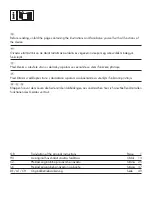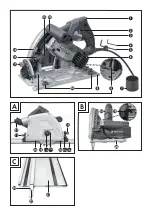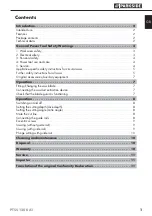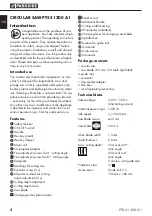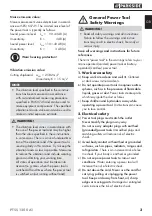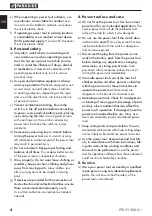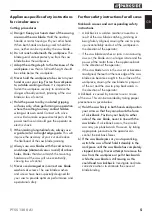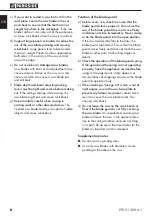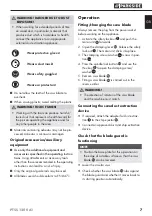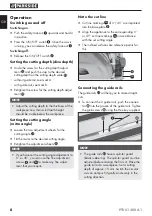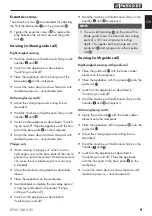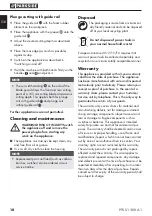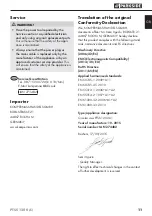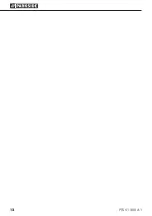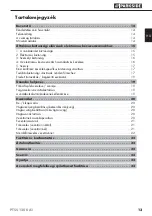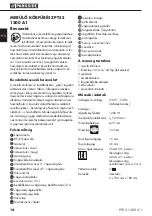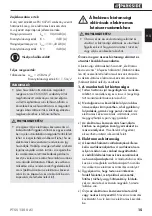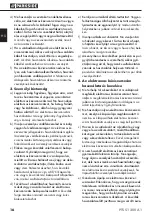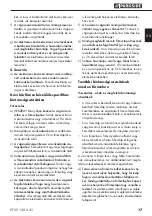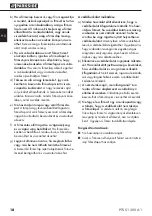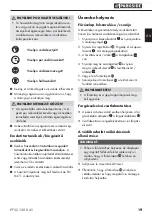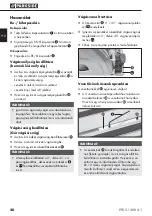
5
PTSS 1200 A1
GB
Appliance-specific safety instructions
for circular saws
Cutting procedures
a)
Danger
!
Keep your hands clear of the sawing
area and the saw blade.
Hold the auxiliary
handle or motor housing with your other hand.
When both hands are being used to hold the
saw, neither can be injured by the saw blade.
b)
Do not reach underneath the workpiece.
The
blade guard cannot protect you from the saw
blade below the workpiece.
c)
Adapt the cutting depth to the thickness of the
workpiece.
Less than a full tooth height should
be visible below the workpiece.
d)
Never hold the workpiece to be sawn in your
hand or over your leg. Fasten the workpiece
to a stable working surface.
It is important to
fasten the workpiece securely to minimise the
danger of bodily contact, jamming of the saw
blade or loss of control.
e)
Hold the power tool by insulated gripping
surfaces only, when performing an operation
where the cutting tool may contact hidden
wiring or its own cord.
Contact with a live
wire will also make exposed metal parts of the
power tool live and could give the operator an
electric shock.
f)
When making longitudinal cuts, always use
a guide rail or a straight edge guide.
This will
improve the accuracy of your cut and reduce
the likelihood of the saw blade jamming.
g)
Always use saw blades with the correct size
and shape (diamond versus round) of arbour
holes.
Blades that do not match the mounting
hardware of the saw will run eccentrically,
causing loss of control.
h)
Never use damaged or incorrect saw blade
washers or screws.
The saw blade washers
and screws have been specially designed for
your saw to provide optimum performance and
operational safety.
Further safety instructions for all saws
Kickback causes and corresponding safety
instructions
–
A kickback is a sudden reaction caused as a
result of the saw blade catching, jamming or
being falsely aligned, causing the saw to jump
up uncontrollably and out of the workpiece in
the direction of the operator;
–
if the saw blade catches or jams in a narrowing
saw cut, the blade can no longer rotate and the
power of the motor throws the appliance back
in the direction of the operator;
–
if the saw blade twists in the saw cut or becomes
misaligned, the teeth at the rear edge of the saw
blade can become caught in the surface of the
workpiece, causing the saw blade to jump out
of the cut and the saw to jump backwards in
the direction of the operator.
A kickback is caused by incorrect use or misuse
of the saw. This can be avoided by taking proper
precautions as given below.
a)
Hold the saw firmly in both hands and position
your arms so that they can absorb the force
of a kickback. Position your body to either
side of the saw blade, never in line with the
saw blade.
If a kickback occurs, the circular
saw may jump backwards. However, by taking
appropriate precautions the operator can
control the kickback forces.
b)
If the saw blade jams or you stop working,
switch the saw off and hold it steadily in the
workpiece until the saw blade has completely
stopped turning. Never attempt to remove the
saw from the workpiece or pull it backwards
while the saw blade is still moving as this
could lead to a kickback.
Investigate and take
corrective actions to eliminate the cause of
blade binding.
Содержание 1200 A1
Страница 3: ...A B C 8a 9a 14a 14b...
Страница 15: ...12 PTSS 1200 A1...
Страница 27: ...24 PTSS 1200 A1...
Страница 39: ...36 PTSS 1200 A1...
Страница 51: ...48 PTSS 1200 A1...
Страница 63: ...60 PTSS 1200 A1...


